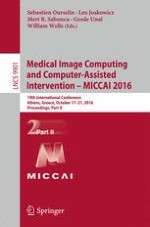2016 | OriginalPaper | Buchkapitel
A Deep Learning Approach for Semantic Segmentation in Histology Tissue Images
verfasst von : Jiazhuo Wang, John D. MacKenzie, Rageshree Ramachandran, Danny Z. Chen
Erschienen in: Medical Image Computing and Computer-Assisted Intervention – MICCAI 2016
Aktivieren Sie unsere intelligente Suche, um passende Fachinhalte oder Patente zu finden.
Wählen Sie Textabschnitte aus um mit Künstlicher Intelligenz passenden Patente zu finden. powered by
Markieren Sie Textabschnitte, um KI-gestützt weitere passende Inhalte zu finden. powered by
